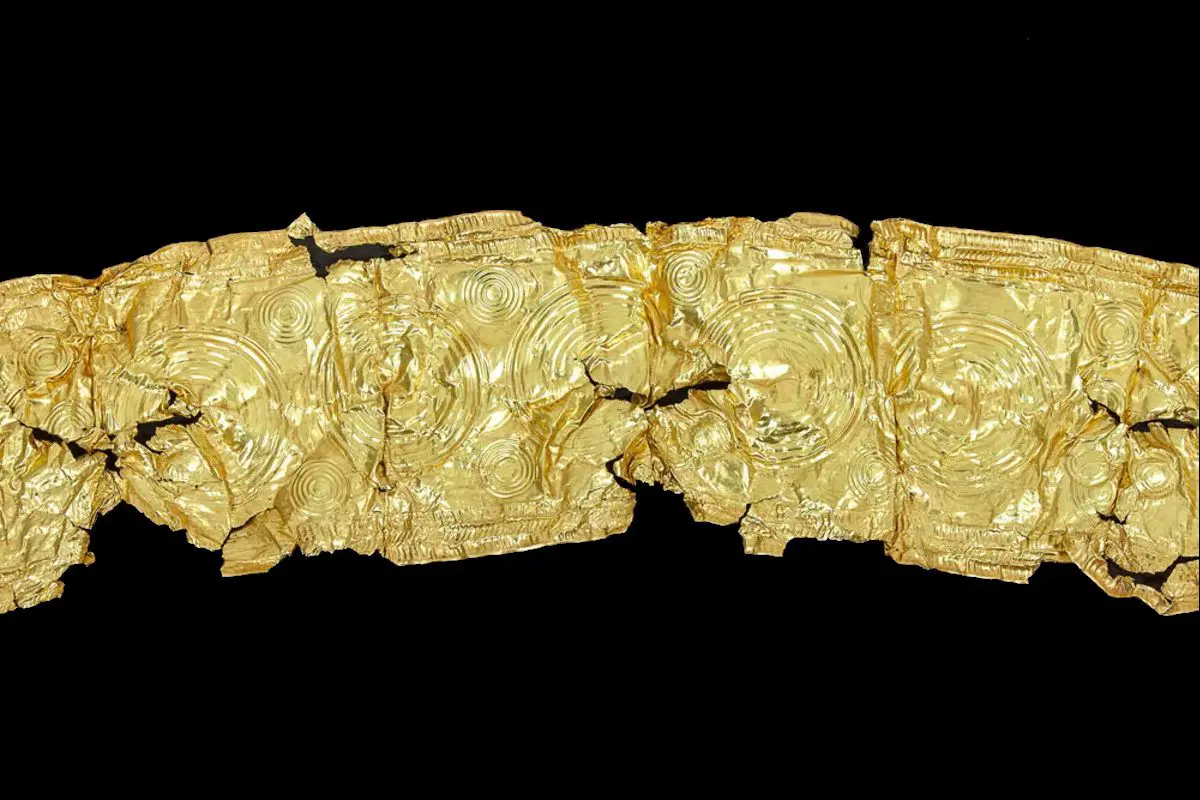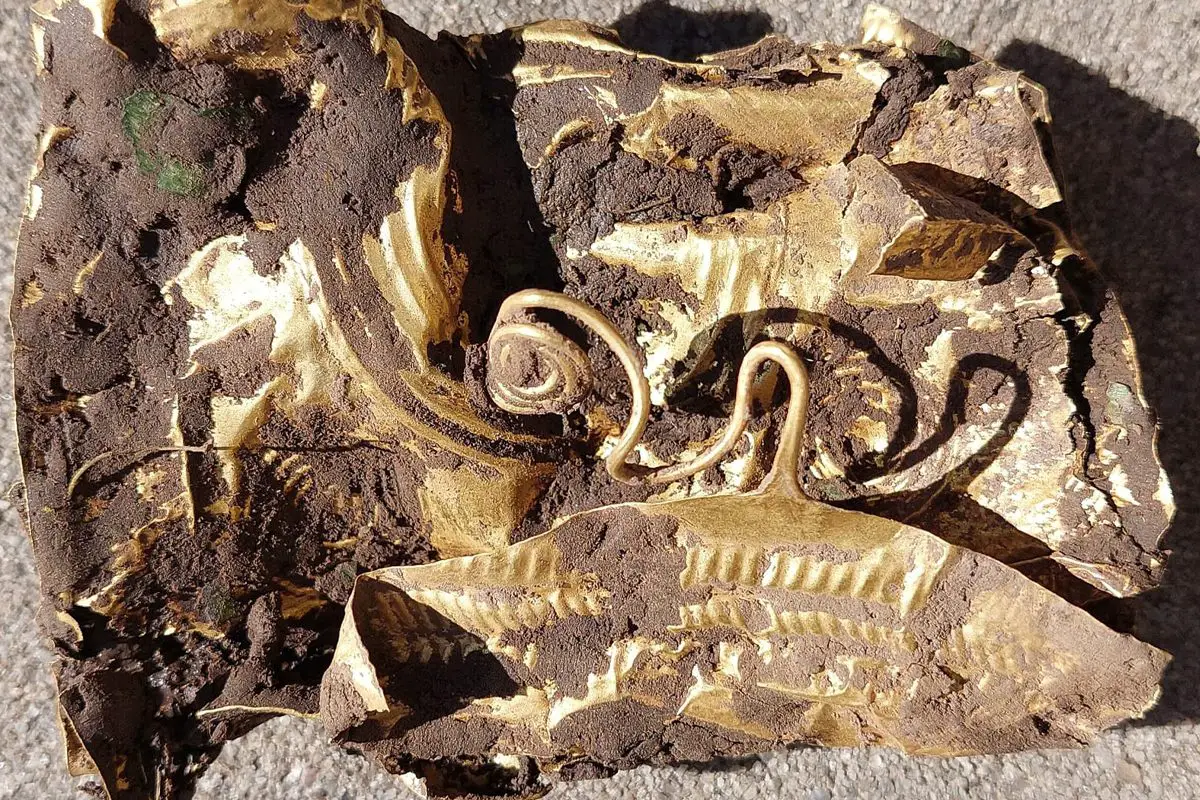A FARMER HAS UNEARTHED AN ORNATE BELT MADE FROM GOLD NEAR THE CITY OF OPAVA, LOCATED IN THE MORAVIAN-SILESIAN REGION OF THE CZECH REPUBLIC.
Upon an initial inspection, it was proposed that the object is a diadem, a type of crown or headband worn as a symbol of authority by the ruling elite.
Measuring 49 centimetres in length, 9cm wide, and weighing 56.5 grams, researchers now propose that the object is an ornate belt dating from the Middle to Late Bronze Age.

The belt is made from a thin metal alloy, with a composition of more than 84% gold, less than 15% silver, and traces of other elements such as copper. Artisans decorated the surface with a series of five large concentric circles, surrounded by smaller concentric circles and an enclosed border decoration.

Image Credit : Bruntál Museum
Determining whether the belt was crafted by local artisans or comes from the regions inhabited by the Carpathian or Balkan Culture requires further investigation, however, archaeologists propose that the artefact dates from the period of the Urnfield Culture around 1300 to 750 BC.
This is based on a preliminary examination of the object’s decoration which is comparable with ornamentation found in prehistoric cultures from the Urnfield Culture period.
Speaking to Czech Radio, Silesia Jiří Juchelka said: “The belt must have belonged to someone in high society, as this type of production was not common. Its owner therefore had to be someone esteemed.”
The belt has been sent to the Museum in Bruntál for conservation, where it will be added to the museum’s collection and placed on public display.
Src: heritagedaily.com








